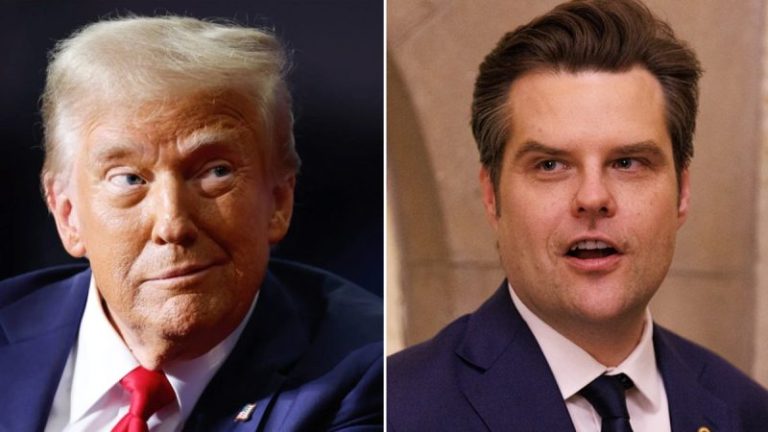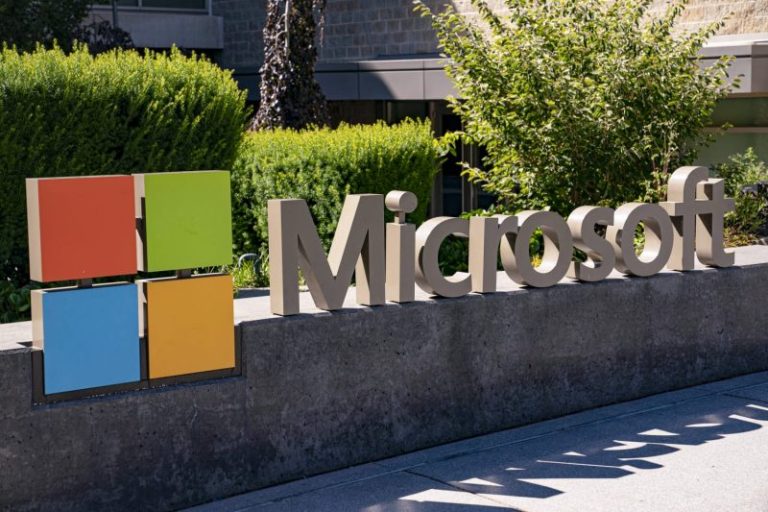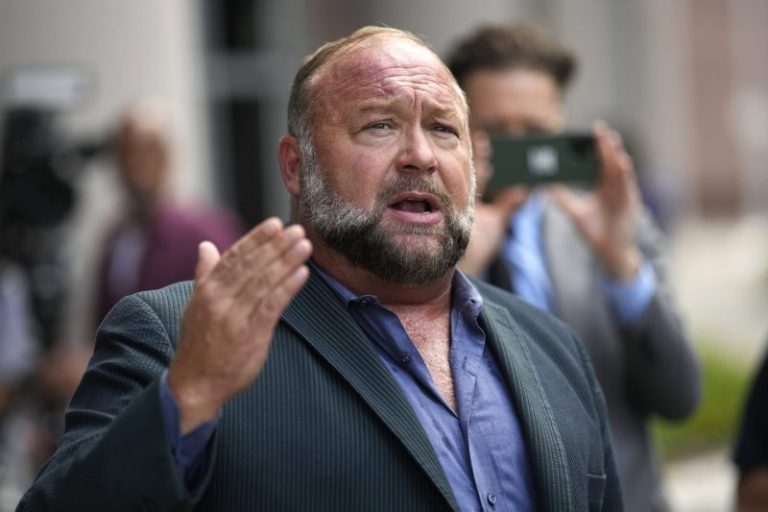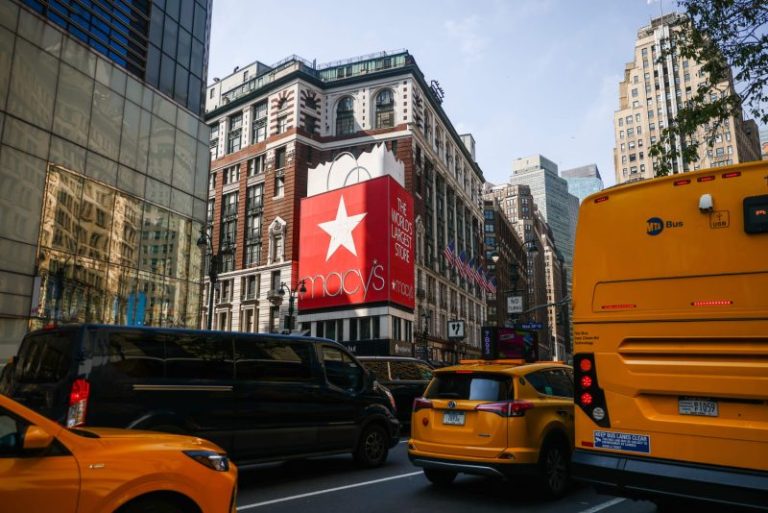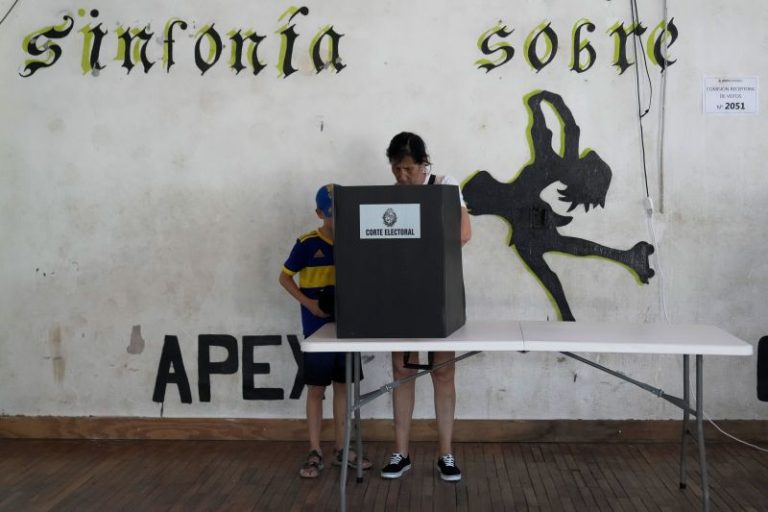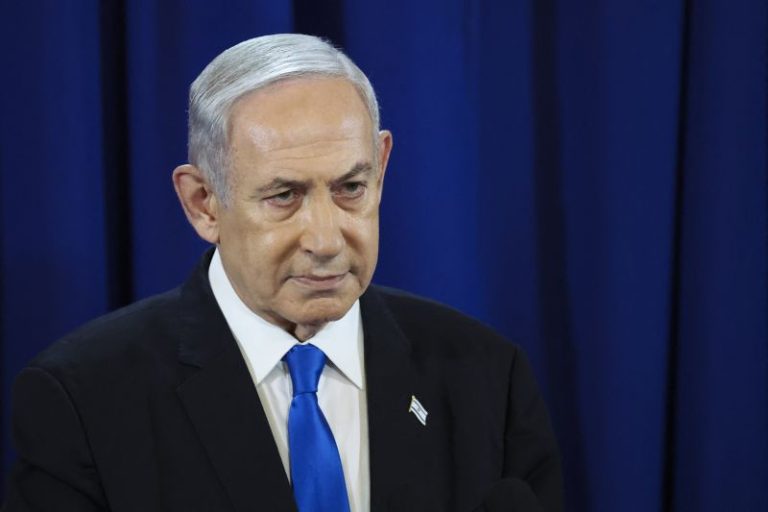Donald Trump was in the room with JD Vance, Stephen Miller and other top advisers after calling senators to try to salvage the sinking nomination of Matt Gaetz.
He wasn’t having any luck.
‘I’m using a lot of my political capital,’ the president-elect told his inner circle. He could only spend so much of it, he explained.
Trump had picked up the phrase from a lawmaker who bluntly told him there was a cost to any continued effort to push the ex-congressman for attorney general, amid allegations of sexual assault and misconduct.
‘Sir, we’re going to vote for you’ on Gaetz, ‘but you’re using a lot of political capital.’
Once Trump told Gaetz that he didn’t have the votes, prompting him to withdraw, he quickly settled on Pam Bondi, a former Florida attorney general and career prosecutor who had precisely the experience that the embattled Gaetz lacked – and without the personal baggage. Gaetz, who is accused of sleeping with a 17-year-old girl, continues to deny any wrongdoing.
He formally withdrew 45 minutes after CNN told him it would report that he’d had a threesome – specifically, that there had been another alleged incident with Jane Doe, the woman who says she had sex with Gaetz at 17, and an adult woman.
Bondi has a history of partisan loyalty to Trump, such as defending him at his first impeachment trial, and this year, headed the legal arm of a pro-Trump firm and became a registered lobbyist.
But here’s the difference, according to insiders: She won’t go in and blow up the Justice Department, as Gaetz wanted to do. She respects the rule of law, say Florida colleagues. She even hired the Democrat who ran against her for AG, who is praising her. Yes, Bondi has talked about prosecuting ‘bad’ prosecutors, but who can object to that?
With Gaetz out, more scrutiny has shifted to Pete Hegseth’s nomination to run the Pentagon’s global bureaucracy.
The view from Trump World is that Hegseth, as a decorated Army combat veteran, probably gets confirmed, though there is annoyance that he didn’t come clean with the transition team about having paid off a woman who accused him of sexual assault, and had her sign an NDA, in what he calls a consensual encounter in California in 2017.
The transition team’s view is that Hegseth did nothing illegal, that he made a deal with the accuser who lied to save her marriage – and didn’t go to the hospital for four days – and he didn’t want this public because he feared losing his job at Fox.
I agree he’ll probably be confirmed, and the transition gang is more worried about Tulsi Gabbard and RFK Jr. As a practical matter, I think the GOP-controlled Senate can reject only one other nominee.
The concern about Gabbard for director of national intelligence is that she has no experience in that sensitive area, that the former Democratic congressional representative met with Syrian strongman Bashar Assad despite his murder of hundreds of thousands of people, and often seems to echo the Putin line. The question is whether she is even qualified.
There is even more concern about Kennedy’s bid to become HHS secretary. He has some good ideas, but even putting aside his history of infidelity, he embraces one conspiracy theory after another: Vaccines cause autism, WiFi causes cancer, water systems should stop using fluoride.
The worst, by far, is what he said in 2020, embracing the idea that the federal government deliberately created the pandemic – what he called the ‘plandemic’ – that killed 1.2 million Americans. This is the equivalent of 9/11 truthers.
The key here is that the criticism is coming from the left. Liberals in the media and on the Hill don’t like RFK because he’s pro-choice and is seen as a rogue Democrat who has said a lot of crazy things over the years, and that could be enough to sink his nomination.
Trump World doesn’t care about the other nominations on the theory that the average voter has never heard of most of Trump’s picks for Energy or HUD.
There’s some Republican resentment at his selection of pro-union Rep. Lori Chavez-DeRemer for Labor, but that’s among the insiders.
What’s striking is that this is the most ideologically diverse Cabinet of the modern era.
As Axios was the first to point out, the lineup ranges from Marco Rubio as secretary of State to a slew of current and former members of Congress to such controversial picks as Hegseth, Gabbard and RFK, to Dr. Oz, to run the Medicare and Medicaid programs, to frequent Fox medical commentators Marty Makary to manage the FDA and Janette Nesheiwat as surgeon general; both are medical doctors. And he chose former congressman Dave Weldon to take over the CDC.
In a CBS poll, 59% approve of the way Trump is handling the transition.
The internal jockeying also led to leaks like this, to the Washington Post:
‘Donald Trump’s attorney and adviser Boris Epshteyn arrived recently for a meeting about Cabinet picks in the Tea Room at Mar-a-Lago only to find his way blocked.
Transition co-chair Howard Lutnick, CEO of Cantor Fitzgerald, told Epshteyn in front of others that this was not a meeting for him. ‘We’re not talking legal nominees today,’ Lutnick said, according to one person familiar with the exchange.
‘Epshteyn refused to budge. Using his forearm, he pushed Lutnick out of the way, according to two people familiar with the incident, which Lutnick later recounted to others. ‘I’m coming in,’ Epshteyn retorted, according to one of the people.
‘A third person described the incident more as Epshteyn simply brushing past Lutnick on his way into the meeting.’
This flood-the-zone approach diverted attention from the Gaetz fiasco and raised questions about incoming White House chief of staff Susie Wiles and how much input she has. And unlike the traditional one-nominee-per-day approach, it blurs the focus on nominees who otherwise might draw media criticism, such as Dr. Oz, who was often accused of peddling ineffective remedies on his TV show, because you’d need a scorecard to keep track of the blizzard of Trump picks.
So why did Trump pick Matt Gaetz in the first place?
It may have been an impulsive move while Trump was on the plane with him, along with Wiles. But the president-elect is savvy enough to know it would trigger a media firestorm, and insiders call it a screw-you decision to the establishment.
Or Trump may have figured that Gaetz was unlikely to make it, but it would be difficult to reject the backup nomination, especially one as qualified as Pam Bondi.
Whatever your view, there’s no question that Trump has managed the transition quite well and, with some exceptions, is off to a good start.

